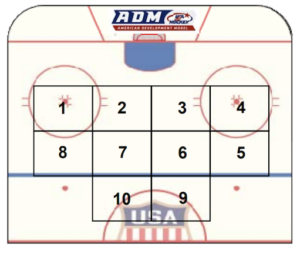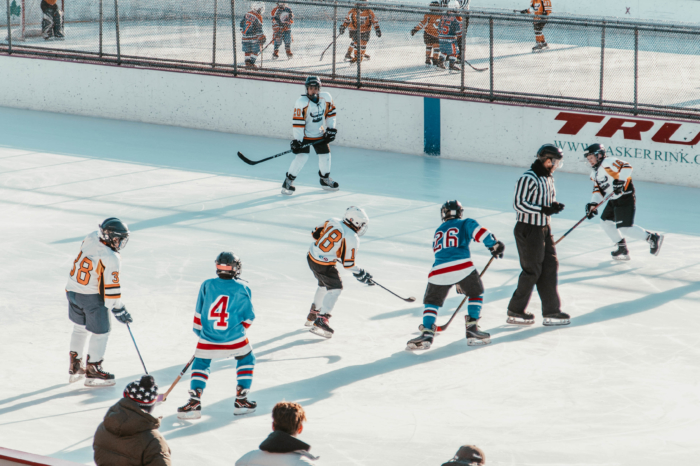Getting Back on the Ice: Youth Hockey Amidst COVID-19
“Hockey teaches you not only to fall down but to get back up,” says USA Hockey executive director Pat Kelleher. This message of resilience is one that Kelleher is emphasizing regarding not only the sport itself, but the ice hockey community’s ability to tackle the adversity that comes with COVID-19. Youth ice hockey presents more challenges in terms of the potential spread of the virus than outdoor sports, but league officials, players, parents, and coaches are eager to develop protocols for getting kids back on the ice.
A primary concern for ice hockey is the fact that it is usually played indoors; players, coaches, spectators, referees, and rink personnel are relying on ventilation, rather than the outside air, to kill potential virus particles in the facility. The CDC Interim Guidance for Businesses and Employers Responding to Coronavirus Disease 2019 (COVID-19) recommends several updated protocols relating to these cleaning systems, which include increasing ventilation rates and outdoor air ventilation, further opening outdoor air dampers to minimize recirculation, and continue running systems as long as possible throughout the day to maximize air exchanges. Access to as much outdoor air and as little recycled air as possible will create the safest breathing conditions for people in the rink. In more technical terms, this guide also encourages disabling demand-controlled ventilation, improving central air filtration to the highest degree compatible with the filter rack, and sealing edges of the filter to restrict bypass. Whether or not these practices oblige some ice rinks to obtain upgraded ventilation systems, clean air circulating through the rink is an essential part of safely returning to play.
One of the major obstacles of returning to youth ice hockey is protocol surrounding the locker room. The U.S. Ice Rink Association released “Returning to the Rinks” guidelines that recommend limiting the use of locker rooms as much as possible – players can come dressed in full equipment and put on skates, physically distanced, in a common area of the rink. Once locker rooms are adjusted for new health protocols, these guidelines recommend physical distance in them and the use of multiple locker rooms in order to maintain this distance. They also encourage limiting the number of parents in the locker rooms at any one time for those age groups that require parental assistance with their equipment.
When on the ice, the key is to use non-contact and physically distanced practice drills for the time being. USA Hockey provides an American Development Model example of a way to do this, with a drawn out “Grid Hockey” visualization that can be used for various drills with less than 10 players:

This grid allows for players to stay spread out on the ice, while executing drills that allow them to work on technical skills such as communication, spatial awareness, and passing and shooting accuracy from different locations around the goal.
In terms of equipment, a few minor adjustments could enhance protection from COVID-19 or other diseases. The “Returning to the Rink” guidelines advocate for disinfecting helmets, sticks, and skates after each training session, as well as washing all cloth apparel at a high temperature. A USA Hockey player safety guide writes that no scientific proof exists that hockey helmets with full clear shields are superior in protecting against infectious diseases, as opposed to visors (half shield) or cages. However, it follows this information by saying that these full clear shields are still likely better in this area due to the potential for decreasing the amount that players touch their face and providing a more extensive barrier against coughs and sneezes.
Given the many physical, emotional, and social benefits of participation in youth sports, it is worth the time and investment to reopen rinks and resume youth ice hockey. Beloved Pioneer deceased staff member, Roger Perry, was especially involved with hockey during his life, and we remember him and his deep commitments to Pioneer through this research and writing and through the Roger Perry Internship Program, a product of which is this blog.
Margaret Smith is a Roger Perry Research Intern at the Pioneer Institute. She is currently a student at Bates College studying economics.



